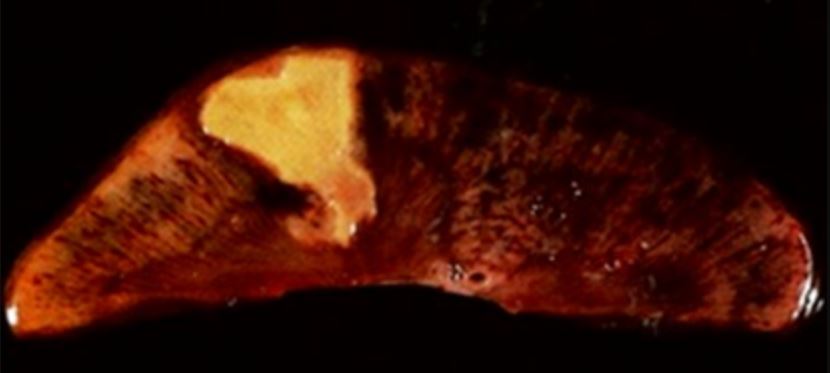Playlist
Show Playlist
Hide Playlist
Hypoxia – Etiologies of Cellular Injury
-
Slides Cellular Pathology Etiologies of Injury.pdf
-
Reference List Pathology.pdf
-
Download Lecture Overview
00:01 So Hypoxia, and this is reduced oxygen levels. 00:05 And this is injurious because it reduces ATP generation. 00:09 And it could be caused by a variety of things, so it can because most commonly by reduced perfusion, that is to say, ischemia. 00:18 So we're not getting enough blood supply into a tissue. 00:20 Clearly, it's not getting enough oxygen, and it's not getting enough nutrition. 00:24 But it's the oxygen. 00:26 We can have diminished oxygenation because the lungs are filled up with infection. 00:32 So a pneumonia with fluid and bacteria and inflammatory cells in the lungs will cause diminished oxygenation, and that will cause hypoxia. 00:42 We can have diminished oxygen carrying capacity. 00:45 So if you are anemic, your red blood cells are not sufficient in number to be carrying enough oxygen around the body. 00:53 Conversely, you may have more than adequate red cells. 00:57 But if all of the hemoglobin within the red cells have bound carbon monoxide in carbon monoxide poisoning, then you cannot, it's actually carbon monoxide binds much more avidly to hemoglobin than does regular oxygen. 01:13 So you can't ever get enough oxygen carrying capacity because you've displaced that with a carbon monoxide. 01:19 And this isn't really hypoxia, but the effects are the same. 01:23 You can have reduced oxidative phosphorelation. 01:25 The mitochondria may not be generating ATP at the same efficiency, because the various electron transport molecules have been poisoned. 01:35 And that's how cyanide works. 01:37 Okay, so we have diminished ATP generation. 01:42 Now this is hypoxia, simply reduced oxygen levels. 01:48 That's it, that's all hypoxia is. 01:50 The most common cause of hypoxia is ischemia, and that has multiple other elements. 01:56 So it's not only reducing the oxygen levels into the tissue, but it's reducing the nutrient supply into the tissue. 02:03 And we're not getting wastes removed from the tissue. 02:07 So all things considered, ischemia is far worse than hypoxia. 02:15 And so simply having diminished oxygen tension is one thing. 02:18 Not getting enough nutrition, not getting enough waste removal far worse.
About the Lecture
The lecture Hypoxia – Etiologies of Cellular Injury by Richard Mitchell, MD, PhD is from the course Cellular Injury.
Included Quiz Questions
Which of the following decreases the oxygen-carrying capacity of the blood?
- Carbon monoxide poisoning
- Pneumonia
- Cyanide poisoning
- Myocardial infarction
- Polycythemia
Customer reviews
5,0 of 5 stars
| 5 Stars |
|
1 |
| 4 Stars |
|
0 |
| 3 Stars |
|
0 |
| 2 Stars |
|
0 |
| 1 Star |
|
0 |
he is very great. he is very explanatory. he takes his time when explaining things





